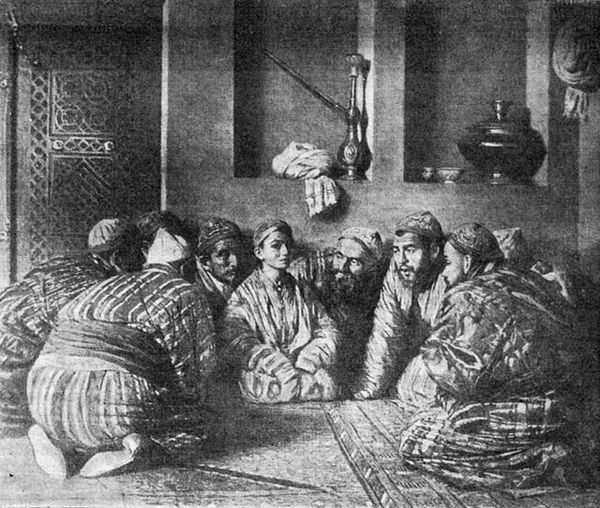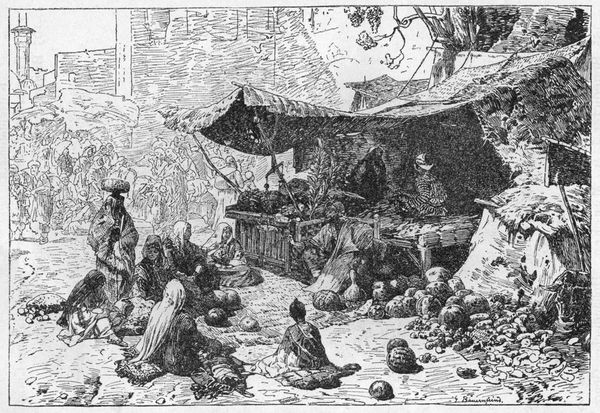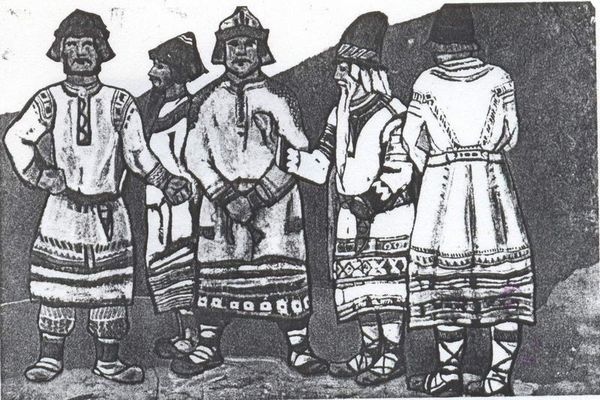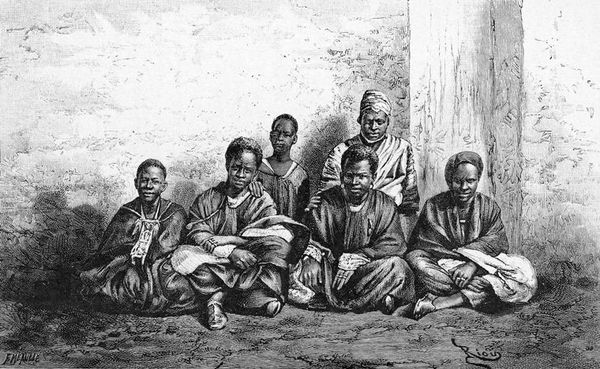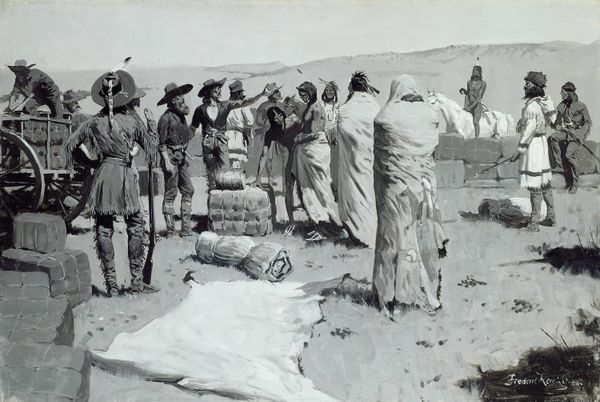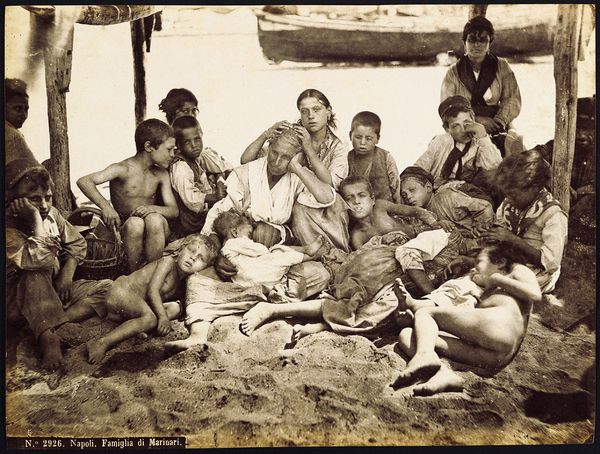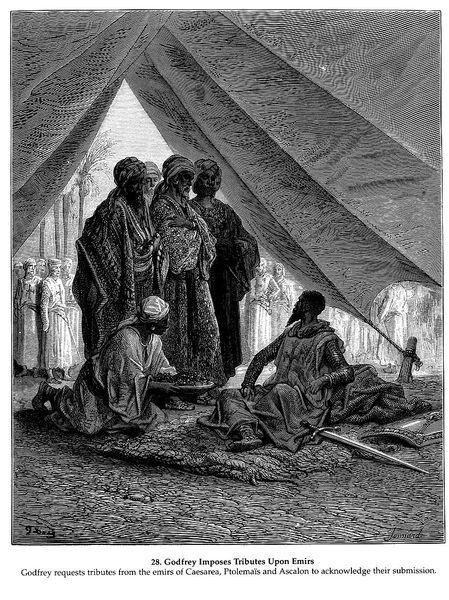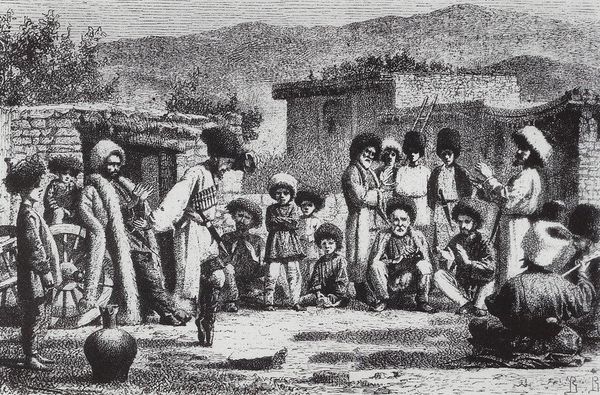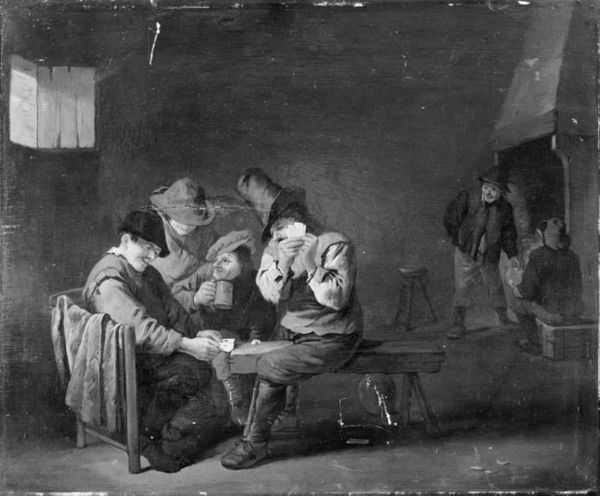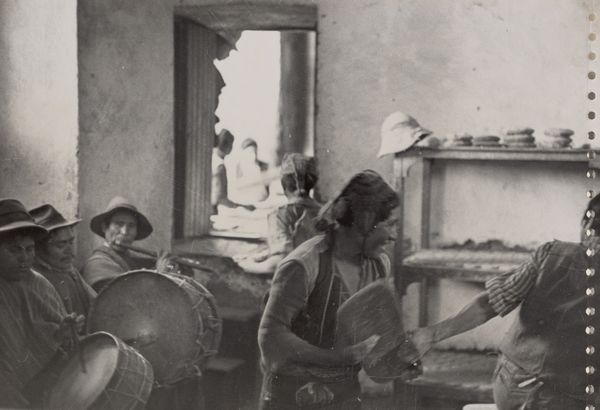
tempera, painting
#
portrait
#
medieval
#
tempera
#
painting
#
landscape
#
figuration
#
black and white
#
genre-painting
#
realism
Copyright: Public domain
Curator: This painting is titled "Rodina" by Ivan Mrkvička. While its exact date is unknown, the painting appears to be tempera on canvas. It presents a genre-painting scene featuring a large family. What's your immediate impression? Editor: My first thought is, there's a definite sense of quiet here. Everyone seems absorbed in their own little worlds, the palette muted...it evokes a kind of stoic peasant life, perhaps even pre-industrial? It invites questions about gendered labor, rural experience, and the role of the family within social structures. Curator: The clustering of the family certainly suggests a cultural emphasis on kinship. Looking at their placement—older women at the sides, younger generation clustered in the middle— it makes me consider cycles of life, wisdom being passed down and maintained, preserved in gestures and craft. The children with handcrafting activities, it seems a clear attempt to signal an intention of social-cultural continuity. Editor: And the near-monochrome palette reinforces that sense of timelessness. I’m also curious about the dogs, there are a few here, and one resting, centrally and peacefully... often animals act as surrogates of something unconscious and perhaps culturally constructed; here they almost soften and deepen that intimate space. Curator: Indeed, the animal could be a protector or familial symbol itself. There's an almost iconographic feel, the people presented frontally in simple dress as if to be 'read'. Consider the symbolism inherent in genre scenes throughout history: these works frequently functioned as carriers of ideological information. They reveal cultural memories but also perhaps constructed ideals of "nation". Editor: Absolutely, and if the title "Rodina," meaning 'family' or 'birthplace', that ties the work closely to these notions of belonging. The lack of idealization, this un-glamorized 'realism', further suggests that these images participate in identity discourses concerning rural inhabitants that tend to idealize them. They seem designed to reinforce an imagined communal harmony, even if daily existence was anything but harmonious. Curator: Agreed. The power of 'realism' lies often in its strategic use rather than reflecting a tangible "truth." I now realize how it brings forward notions of memory, family roots, the past echoing across generations. Editor: Seeing art like this lets me reflect on how such narratives can affect society, and maybe lets me deconstruct dominant presumptions. This look at Rodina encourages a critical interrogation, a thoughtful conversation.
Comments
No comments
Be the first to comment and join the conversation on the ultimate creative platform.

